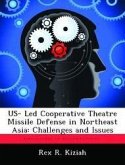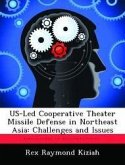The US military faces new strategic challenges in the 21st Century. Amongst them is the ability to rapidly project sufficient force to address these challenges. This monograph researches the potential deployment of a US Army heavy force package from Kuwait to India and Pakistan to conduct a stability operation in Kashmir. This fictional scenario provides a vehicle to introduce and discuss the challenges to the military as it pertains to force projection and strategic deployment. The purpose of this monograph is to address the fundamental question: Is it feasible to re-deploy a US Army heavy force package from Kuwait to India and Pakistan (South Asia) to support a stability operation in Kashmir. Furthermore, it will use this scenario to demonstrate the complexities and contemporary challenges associated with strategically moving a force inter-theater. This monograph examines four components of strategic mobility to determine feasibility: Airlift, Sealift, Army Prepositioned Sets of equipment Afloat (APS-A), and Infrastructure. This paper utilizes the Joint Flow and Analysis System for Transportation (JFAST, v.8.0) and a Time Phased Force Deployment Data List (TPFDDL) for a fictional US Army heavy division (-) to run in simulation. This data will add credibility to the issues and validate the recommendations and conclusions. Moreover, this monograph looks at recent deployments and the statistics associated. Both the simulation results and the statistics from recent deployments allow the author to draw conclusions for each facet of the four strategic mobility components in the final chapter. Ultimately, the author concludes that re-deploying a US Army heavy force package inter-theater from Kuwait to India/Pakistan is feasible, but inefficient.








